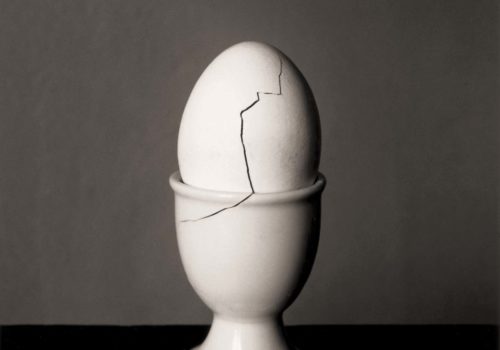A poet of the image, Chema Madoz uses photography as a means to redefine his relationship with his immediate surroundings. His work focuses on the unusual presence of the items he chooses and arranges in intimate settings‚ which he himself builds‚ and then photographs in black and white. The air of poetry he thus extracts from these objects means that however ordinary or humble they may be, they are now open to new and varied readings.
Madoz employs a range of different types of objects in his work: the objet trouvé, a found object without any alteration, the manipulated object and the object that he himself invents and makes in his studio. In his constant fascination with them, he returns to these objects, transforming them, attempting to establish their various combinations and their initially hidden connections, and exploring visual illusions.
“It could be said that Chema Madoz” art is the art of combination, the combining of objects, some of which are markedly different while others are akin, related. Hence the title of the exhibition, which is a nod to the combinatory arts developed in the 13th and 14th centuries by the Majorcan philosopher Ramon Llull (known in the English-speaking world as Raymond Lully), which many regard as a precursor of the computer.
“Following an initial period in which Madoz worked with the human figure, natural light, chance and reportage, his studio began in 1990 to fill with objects that he has accumulated over the many years of his career. […] His studio is not, however, just a space where he amasses objects but also the place where, having arrived at an idea of what he wants to achieve, he sets about organising and building it so that it might be photographed‚Äîhe sees the photograph as a record of memory that allows him to fix an idea‚ “giving rise to the final image, to the work. […] Madoz seeks to make subtle changes to things by adding and subtracting, his purpose being to create that sense of strangeness we feel as we look at his photographs. Strangeness and familiarity are two characteristics of his work. Strangeness because at first glance his works shock and surprise us‚”they have no titles and contain no clue that might help us to interpret them‚” and familiarity because we instantly recognise his references and, as we discover them, a smile lights up our eyes and we become readily attuned to his vision. We feel as if we are partners in a joint discovery, because although the artist may be the first to reveal this new relationship, meaning or likeness to us, he also invites us to make this discovery for ourselves. He wants to involve us in his findings and so he refuses to direct our attention by giving his works descriptive titles that might limit our gaze by imposing his ideas on us.”
Chema Madoz. Ars combinatoria
April 9 – July 27, 2013
La Pedrera
Provença, 261 –
265. 08008, Barcelona.
Spain
902 202 138
















